Zesty Cherry Rhubarb Pie with a wonderfully flaky crust that doesn’t come out soggy! The natural sweetness of luscious cherries mingles with the vibrant tartness of rhubarb, and a hint of fragrant vanilla, for an absolutely ambrosial pie. An easy method, along with some tips, on how to avoid a soggy pie crust.
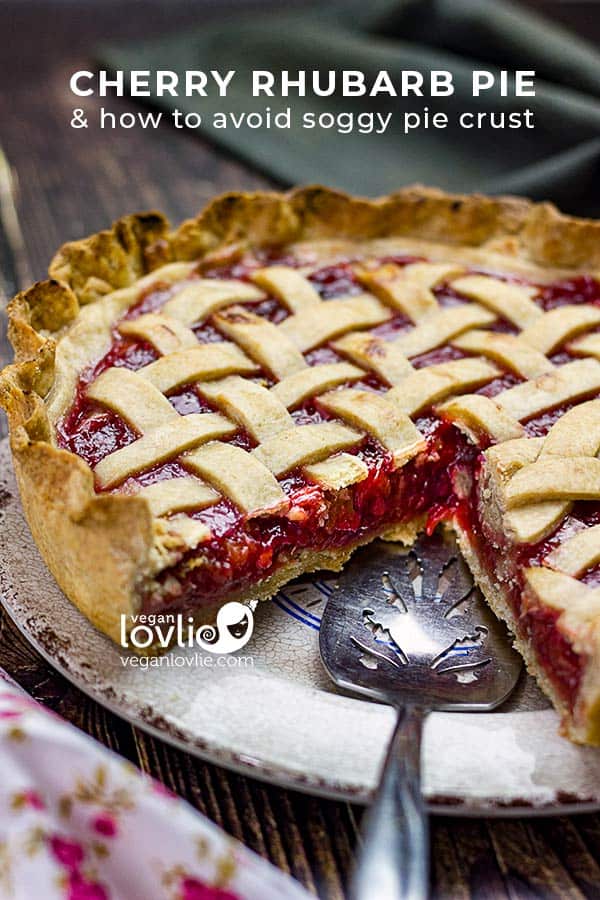
Strawberries and rhubarb are often paired in many recipes, mostly scrumptious desserts, although breakfasts and beverages weave their way in too. I find cherries to be a superb match too, despite being in season simultaneously with rhubarb for a short span. Cherries are often sweeter, lessening the need for a lot of added sugar. Their deep red colour brightens rhubarb’s rather subdued hue to a richer more appealing pie.
The downside is perhaps that you have to pit them if you are using fresh cherries. I do admit that I’ve used pitted frozen cherries in this pie, as I had already gone through the bag of fresh cherries that we bought for this week and eaten them all. They are so good! Either way, fresh or frozen sweet cherries, both work well in this recipe.
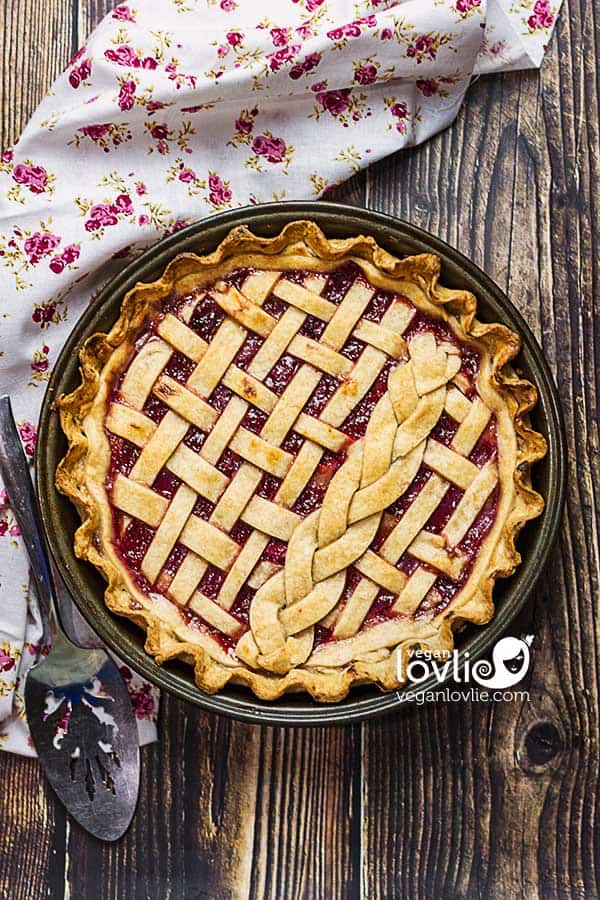
Fresh fruit pies can sometimes be quite a challenge as they release a lot of juice during baking, which often results in a pie with a soggy bottom crust. Even store-bought pies, which I very rarely buy, present this problem and are often soggy and unappealing.
There are various tips out there on how to avoid the crust from getting drenched in a pool of juice. Some suggest leaving the fruits to macerate in sugar, then drain the water before adding the fruits to the pie crust. But with this method, much of the beautiful flavours from the delicious fruit juice are lost.
Other methods suggest brushing the crust with some form of natural fat, like some nut or seed butter. Since both Kevin and I are allergic to nuts and many seeds in varying degrees, this isn’t an option for us. It might work for you, although I haven’t found this method to be foolproof either.
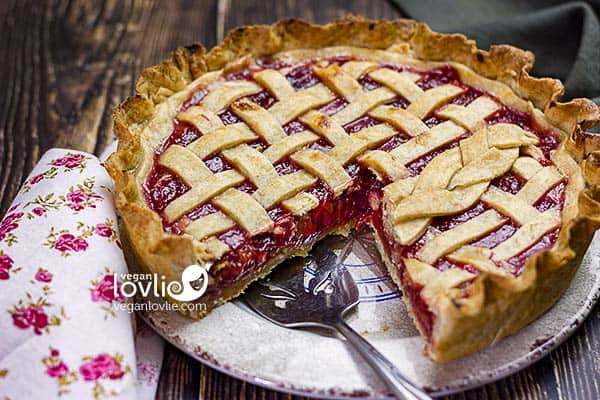
How to Avoid Soggy Bottom Pie Crust
1. Evaporate the juice rather than draining it
What I like to do instead is reducing the juices on medium-high or high heat. This retains, and even intensifies, all the flavour of the fruits, while quite simply eliminating the very cause of sogginess. You do have to gently stir the fruits occasionally and leave just a little bit of juice, otherwise you’ll end up with filling that is too thick and jam-like once the thickener is added. We’re looking more for a compote or fruit butter consistency with a tad more liquid.
It’s quite similar to the way I make Mauritian Banana Pie, where the bananas get cooked and caramelised first. The result is a pie that is bursting with flavour, with filling that has the right amount of moisture, and a crust that remains light and flaky.
This method does involve an extra step, which may seem like it requires extra time, but the baking time is considerably reduced thereafter.
2. Choose the right thickening agent
Some fruit pies like the banana pie mentioned above, don’t require any thickener. But delicate and watery fruits are best when they are bound with some starch.
My preference is arrowroot starch as it does not lose its binding properties with acidity. Other starches like cornstarch or potato starch may lose some of their viscosity in an acidic environment. I find tapioca starch to produce a rather gooey consistency for pie filling, although it is an acceptable option as it is a stronger binder than corn or potato starch.
3. Add the thickening agent at the right time
The time at which the starch is added to the fruits makes quite a difference too, especially if you are not using arrowroot. Adding the starch after the fruits have reduced and cooled is the best moment for watery fruits, like in this case. It will then do its thickening job during the baking time. As the temperature goes up, the starch will quickly thicken the filling soaking up the liquid and binding everything together before any juice gets a chance to drench the bottom. This also helps the filling and the crust to adhere together when the pie is sliced after baking.
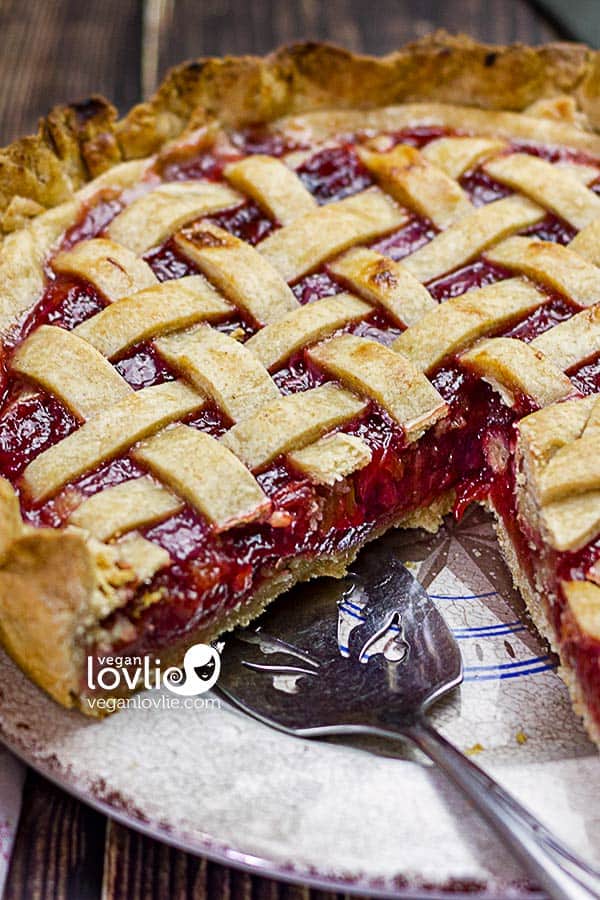
Cherry Rhubarb Pie
The Baking Time
A lot of fruit pies require more than an hour of baking time. By following all the tips outlined here, the baking time can be considerably reduced to just the amount of time that the crust needs to fully cook.
Since the crust remains rather dry with no extra liquid to get rid of, the pie only takes about 20 – 25 minutes to bake in a preheated oven at 180C/350F.
And best of all, you can even slice the pie while it’s still warm, that is if you enjoy your tart warm!
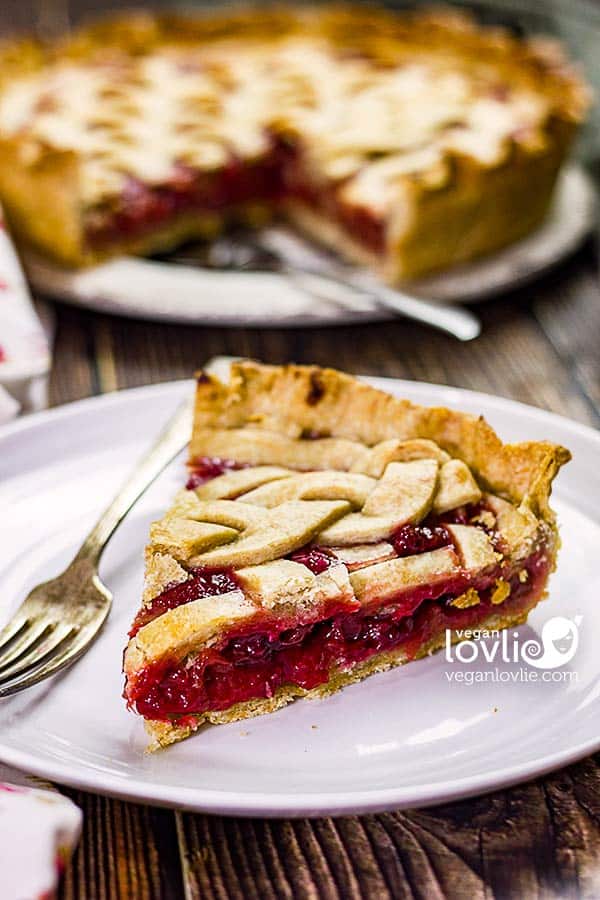
The Pie Crust
For the pie crust, I am using my go-to Oil-based Shortcrust Pastry, which is easy to make and result in a light flaky crust. If you want a richer more buttery crust, you can add a couple more tablespoons of oil to the flour.
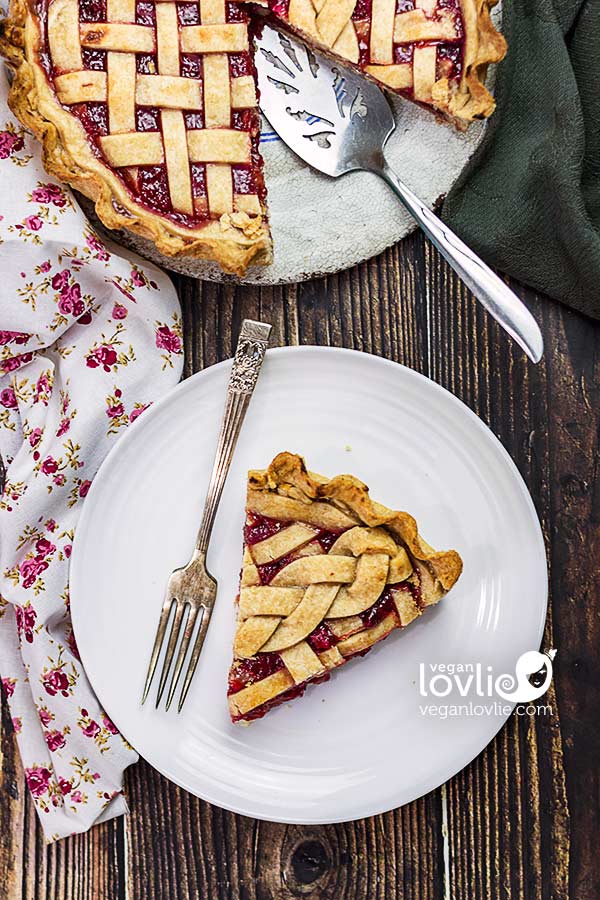
To make Cherry Rhubarb Pie
Start by washing the rhubarb to remove all dirt. If the stalks are large, cut in half lengthwise. Then, dice the rhubarb into about 1 cm [½ inch] pieces.
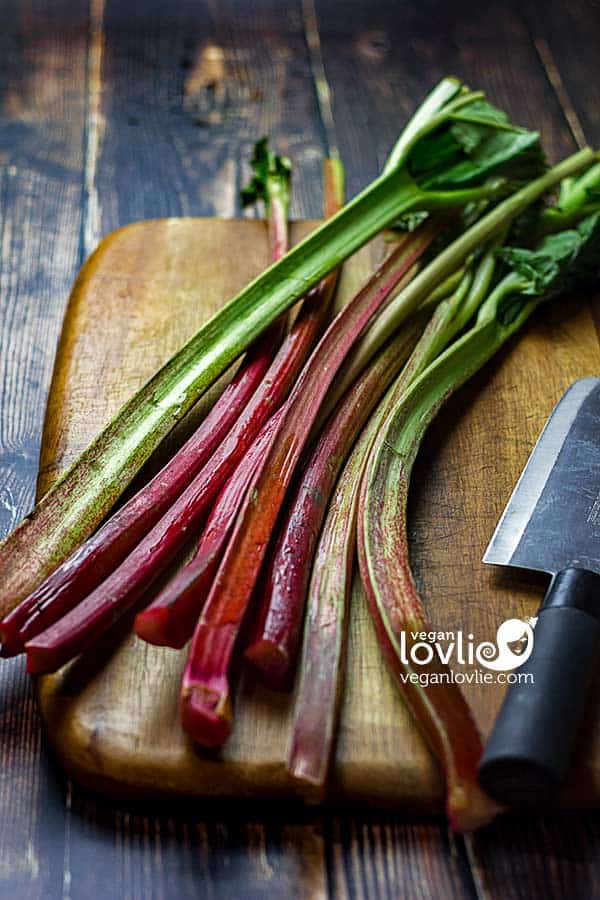
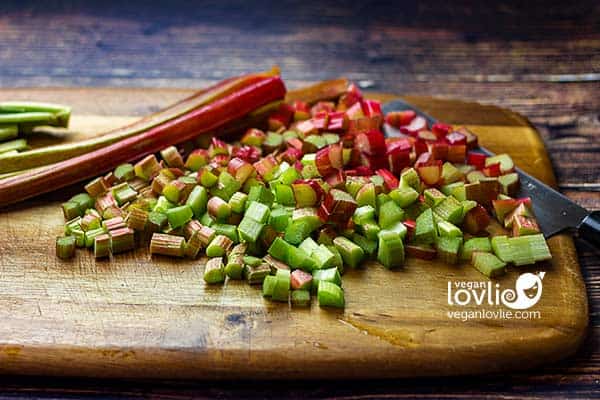
Place rhubarb, cherries, sugar and vanilla extract in a saucepan on medium-high heat, and simmer while stirring occasionally until most of the liquid has reduced. Turn off the heat and allow the compote to cool completely. Do not completely evaporate the liquid, we’re looking more for a compote consistency with a bit more liquid. At this stage, you can also adjust the sweetness to your taste. Just stir in some more sugar if desired.
Once the compote is cooled, stir in the arrowroot starch and set aside until ready to use the filling.
While the fruits are cooking, prepare the pie crust according to the recipe instructions for the Shortcrust Pastry.
Then, set the oven to preheat at 180C/350F.
Once the dough is formed divide it into 2 pieces — 2/3 and 1/3 proportions. Take the larger piece and roll it out to the size of the pie pan, accounting for the height.
Wrap the dough around the rolling pin and transfer to the pan. Spread it out and shape it into the pan. Flute the edge and pierce the dough all over with a fork.
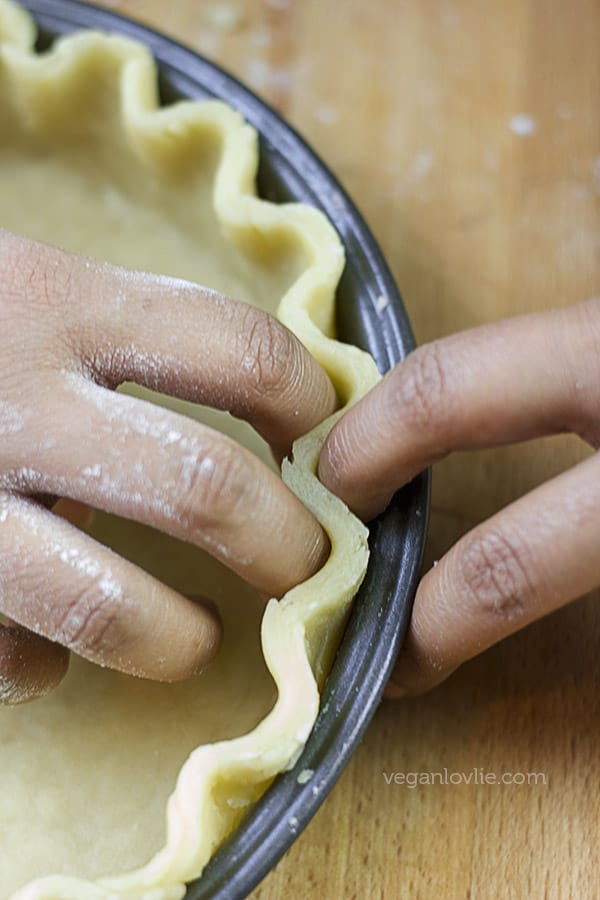
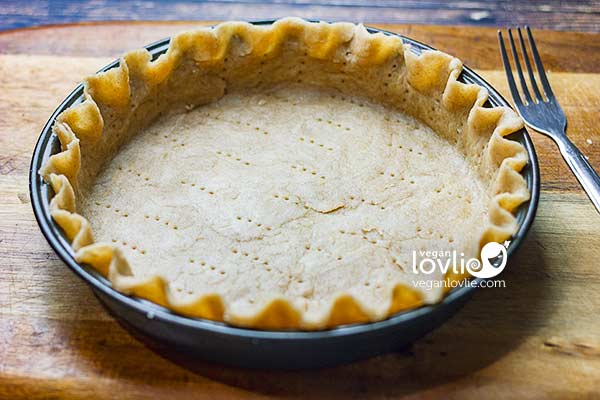
If you’d like to see how to flute the edge, watch this video below for the how to make Oil-based Shortcrust Pastry.
The dough then goes in the oven to pre-bake for about 8 minutes.
Meanwhile, prepare the remaining 1/3 piece of dough for the lattice or the top. Roll and spread it out slightly larger than the diameter of the pan. If you are making a lattice, cut the dough into strips.
Take out the crust from the oven. Fill with the cherry-rhubarb filling.
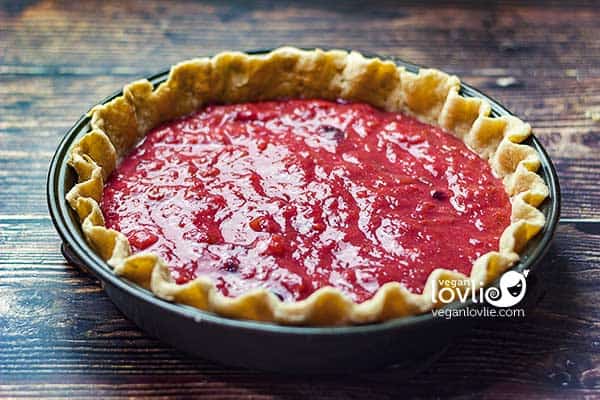
Work the lattice on top. If you are covering the pie completely with 1 sheet of dough, make a few cuts into the dough to allow the steam to escape.
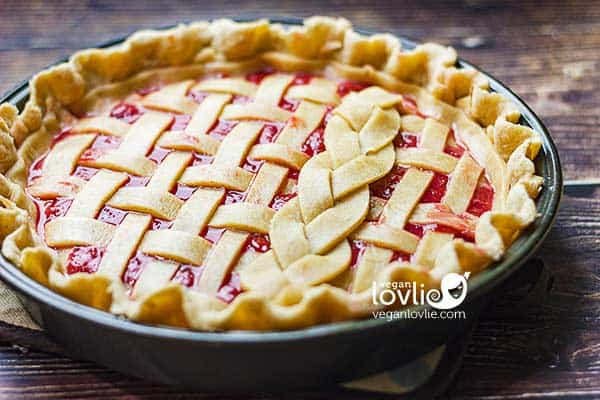
For the glazing, mix the soymilk and maple syrup together and brush the top.
Place the pie back in the oven to bake for 20 – 25 minutes. To avoid the edge from burning, you may cover the edge with foil.
Allow the pie to slightly cool before slicing and serving.
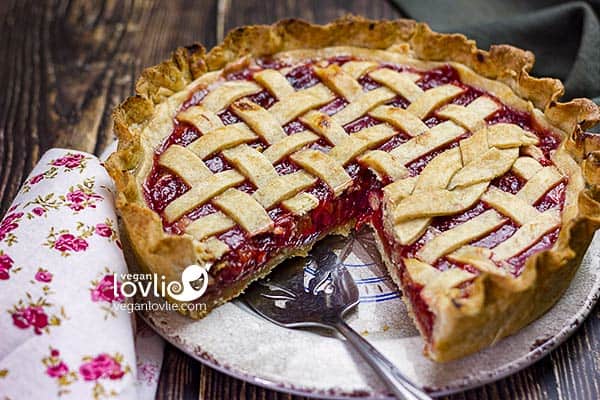
Love this Cherry Rhubarb Pie recipe? Don’t forget to pin it for later.
And while you’re on Pinterest, come follow and pin along with us.
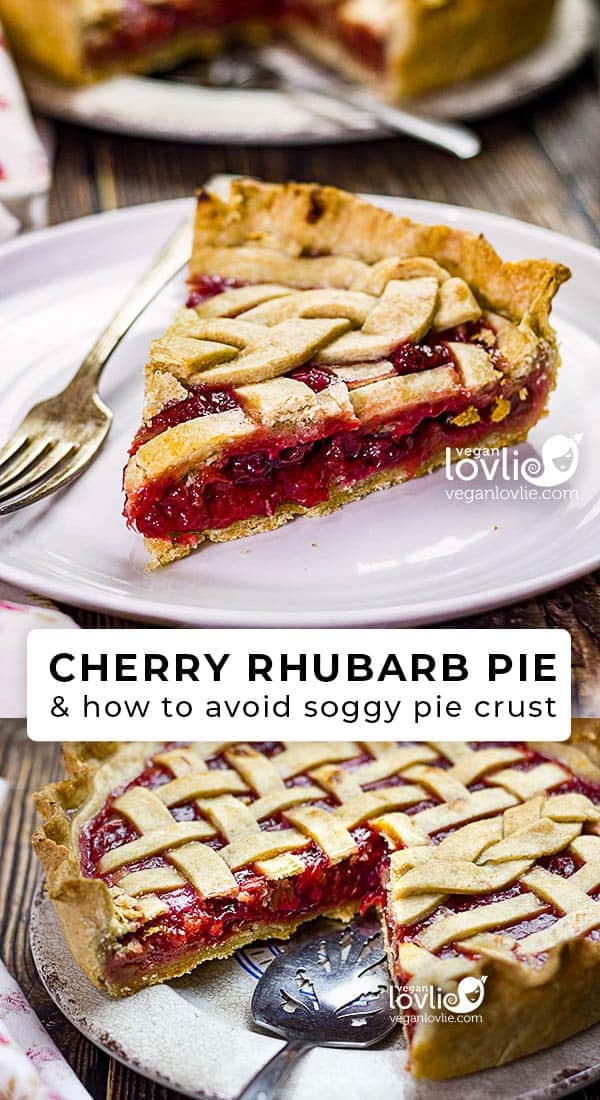
Cherry Rhubarb Pie
Ingredients
Filling
- 500 g rhubarb, [about 8 – 10 medium stalks]
- 50 g pitted cherries, frozen or fresh, [about 8 cherries], see notes
- ½ cup brown sugar, adjust to taste, see notes
- 1 teaspoon vanilla extract
- 2 tablespoons arrowroot starch
Crust (including top crust or lattice):
- 1.5 x recipe for Oil-based Vegan Shortcrust Pastry, see notes for link
Glazing
- 1 tablespoon soymilk
- 1 teaspoon maple syrup, or brown sugar
Pie Dish
- 24 to 26-cm [9 – 10 inch] pie pan
Instructions
- Wash rhubarb to remove all dirt. If the stalks are large, cut in half lengthwise. Then, dice the rhubarb.
- Place rhubarb, cherries, sugar and vanilla extract in a saucepan on medium-high heat.
- Simmer while stirring occasionally until liquid has reduced.
- Turn off the heat and allow to cool completely.
- Once cooled, stir in the arrowroot starch and set aside until ready to use the filling.
- While the fruits are cooking, prepare the pie crust according to the recipe instructions.
- Preheat the oven at 180C/350F.
- Divide the dough into 2 pieces – 2/3 and 1/3 proportions. Take the larger piece and roll it out to the size of the pie pan, accounting for the height.
- Wrap the dough around the rolling pin and transfer to the pan. Spread it out and shape it into the pan. Flute the edge and pierce the dough all over with a fork.
- Place the dough in the oven to pre-bake for about 8 minutes.
- Meanwhile, prepare the remaining 1/3 piece of dough for the lattice or the top. Roll and spread it out slightly larger than the diameter of the pan. If you are making a lattice, cut the dough into strips.
- Take out the crust from the oven. Fill with the rhubarb-cherry filling.
- Work the lattice on top. If you are covering the pie completely with 1 sheet of dough, make a few cuts into the dough to allow the steam to escape.
- For the glazing, mix the soymilk and maple syrup together and brush the top.
- Bake for 20 – 25 minutes. To avoid the edge from burning, you may cover the edge with foil.
- Allow the pie to slightly cool before slicing and serving.
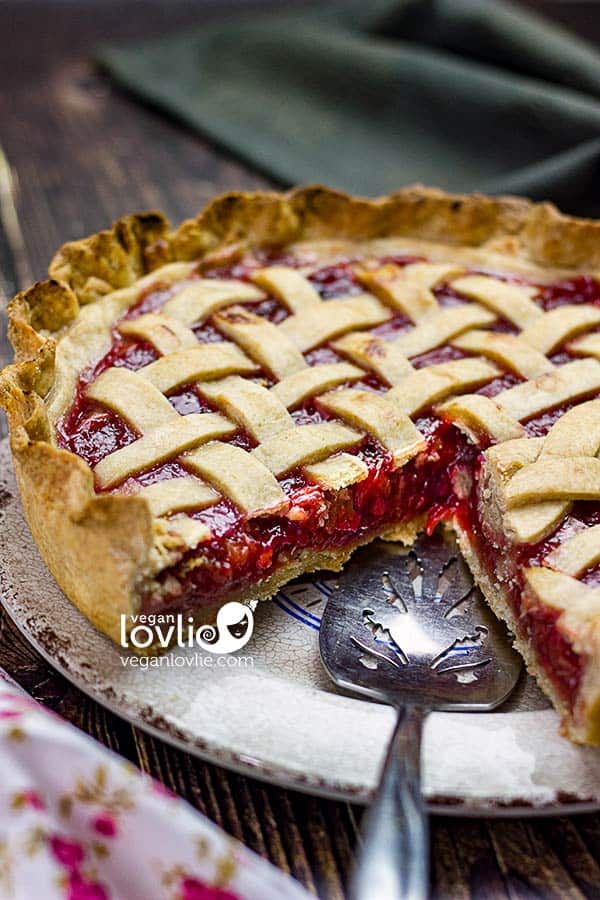
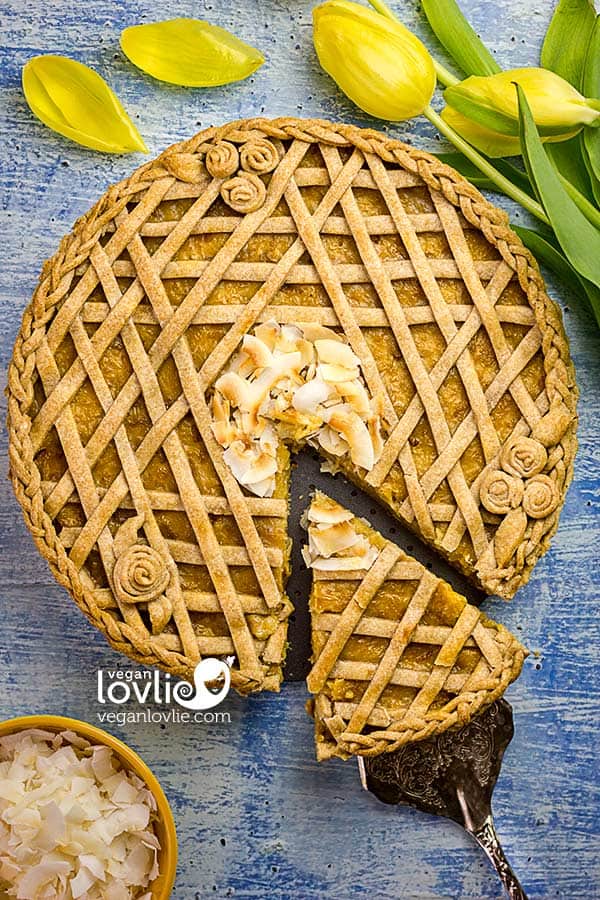
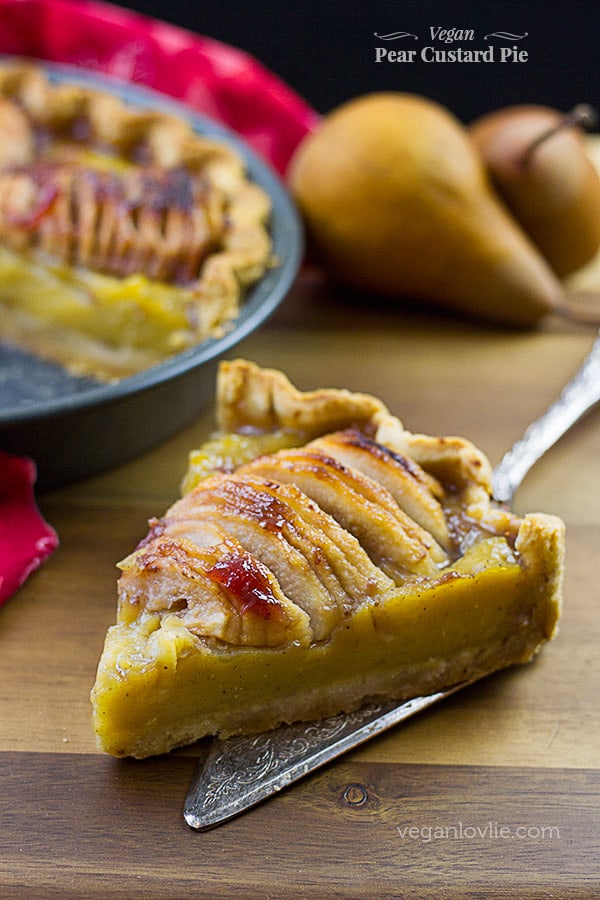
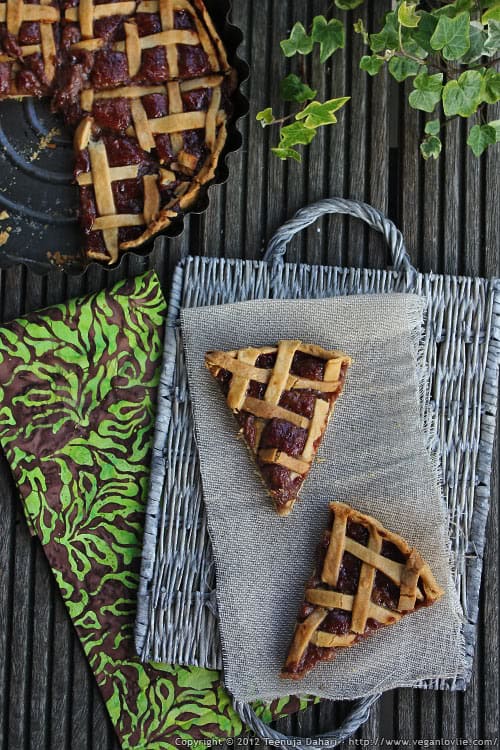
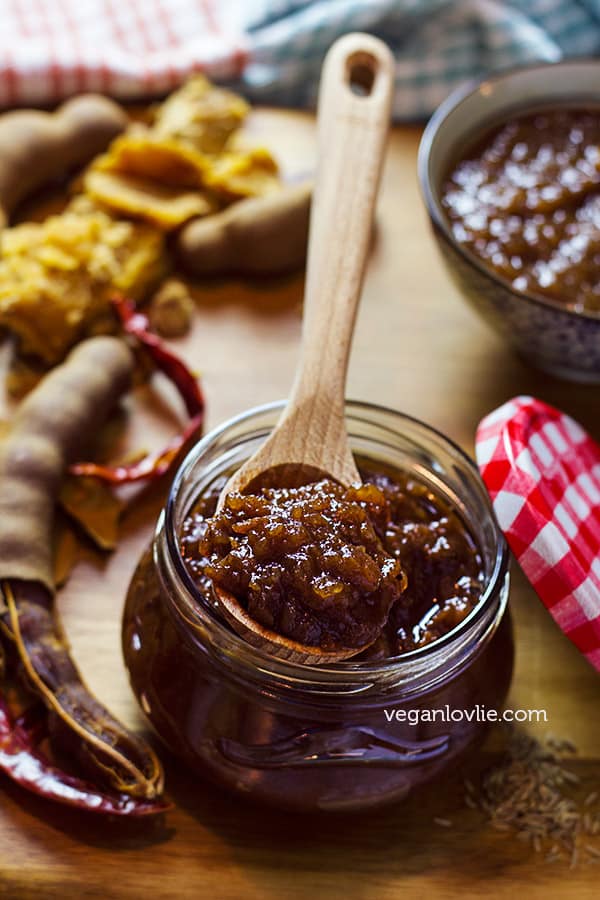
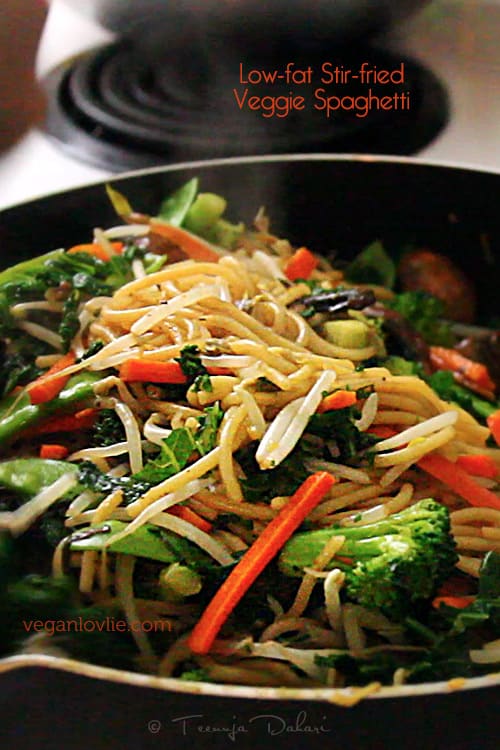
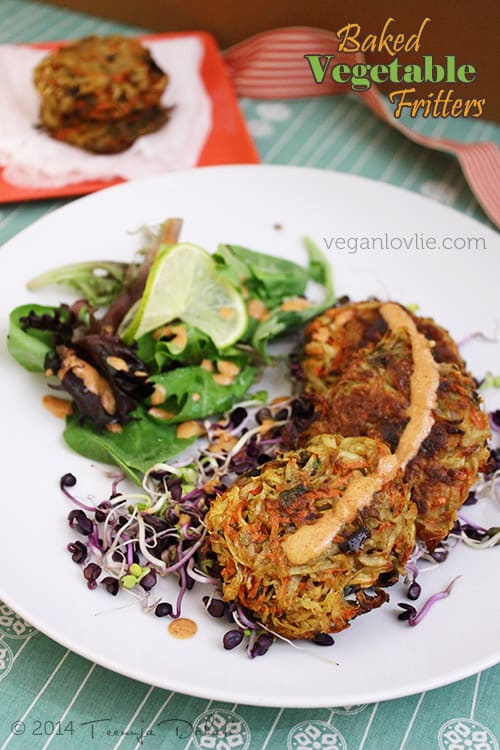
Damn good pie!